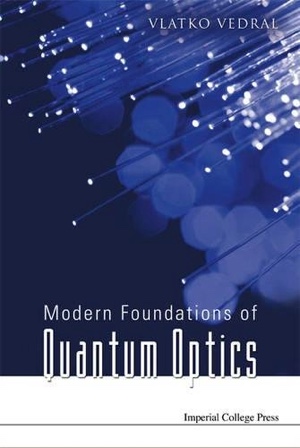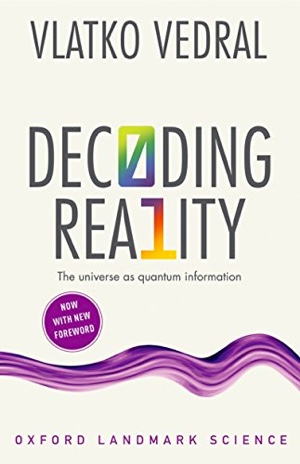To calculate the actual probability for the electron to go from A to B, we need to add up all the amplitudes and take a mod square, which gives us the probability. Why do we take the mod square? The intuitive answer is that the mod squared gives us the electron intensity, which is the click we get in the electron detector at B. Both probability and intensity are real and positive numbers (and proportional to one another), hence it makes sense to take both the modulus as well as the square of the amplitude.
Here however I want to explain that other relationships between the amplitude and probability exist, and they all depend on how measurements are actually conducted. An amazing example is this.
Suppose we have two non-orthogonal quantum states of light that we have to discriminate between. A photon that has an equal chance to be polarized horizontally as well as at 45 degrees. The 45 degrees polarization is simply an equal superposition of horizontal and vertical. Therefore, if we make a measurement, and we obtain the horizonal polarization, this could be because the photon really was horizontal to start with, or because it was 45 degrees. It is twice as likely that it was horizontal since the 45 degrees has only half of the horizonal component, but we can never know for sure.
The best we can do is perform that measurement to reduce our uncertainty, but the uncertainty cannot be smaller than the mod square of the overlap between horizonal and 45. Since the latter is 1/root(2), the probability of making a mistake is equal to a half. This is therefore the meaning of the mod squared in quantum physics.
However, is there a meaning for the amplitude itself, namely the 1/root(2), other than saying that its square is the probability? Funnily enough, and perhaps contrary to what you leant in your course on quantum physics, the amplitude itself (not its square, but just its real part) can also be interpreted as a probability.
What?, I hear you cry. Surely that cannot be right! It would mean that the Born rule for mod squaring the amplitudes to get probabilities is wrong. However, this is not the case. Basically, the Born rule at a higher level, becomes another rule (say a square root of Born), at a lower level.
I’d like to explain this in a more detail to demystify it a bit. Suppose that you need to discriminate between horizontally and 45 degrees polarized photon, but you never want to be wrong. You are happy to say that you don’t know, but if you do make an inference, you want it to be 100 percent accurate.
This could be done with a photon in the following manner. We first put in front of the photon a crystal that only lets through vertical polarization. If the photon goes through, it must have been 45. Alternatively, we can put the crystal at -45, in which case – if the photon goes through – it must have been horizontal. However, if the photon does not pass this, then we cannot tell. It could be either horizontal or 45, in which case we just admit that we don’t know.
So this is a measurement with three outcomes, one that lets us infer horizontal, the other that lets us infer 45, and the last outcome when we have to admit that we don’t know (we could always guess, but, as we said, the premise is that we don’t want to make a wrong inference).
The bottom line now is that the probability for this last outcome is 1/root(2), i.e. it is equal to the amplitude itself! You will notice that, if we want to guarantee not being wrong, the probability of being right goes down (1-1/root(2)) with respect to just making a measurement with two outcomes (1-1/2=1/2). This intuitively makes sense as there is a price to pay for insisting on not making a mistake.
But where is the Born rule in all this? It seems that the probability in the new scenario is simply just the mod of the amplitude. However, the Born rule, as I mentioned, appears at a higher level. If the three outcome measurement is presented as entanglement of the qubit with a qutrit (another quantum three level system), then at the level of the qutrit, the 1/root(2) probability is the outcome of taking the mod square of the amplitude 1/root(root(2)) – the amplitude here is one over the fourth root of 2. I talked about the Church of the Higher Hilbert Space before, and at that level (at which every measurement is just entanglement with another quantum system) the Born rule applies.
And, given that entanglement is, in the words of Erwin Schrödinger, “the characteristic trait of quantum physics”, we should think of entanglement as being the primary fundamental notion, and the probabilities as a derived concept. Looking at things this way, resembles the famous twist that Einstein did on entropy, where he thought of entropy of a gas of photons as fundamental and the probabilities for different photon numbers as derived from entropy. Entanglement and probability have a similar “Einsteinian” relationship – and I will reserve another whole blog to this very topic.
But back to Born now. At the ultimate level, therefore, when we include everything quantumly into our description, the Born rule holds, but this may correspond to another rule at the level of subsystems. Of course, we may immediately ask another question. Is it possible to introduce an intermediate scenario where we are neither sure, not completely clueless as to whether we are making mistakes? What if we give a certain probability of not being wrong?
Then the probability can be anything between the mod and the mod squared of the amplitude between the two states to discriminate. This comes out of the fact that at the higher level, the entanglement with the qutrit would be non-maximal, and the precise amount of entanglement allows us to tune the probability correspondingly.
But what about going outside of this range? It seems that maybe any non-negative assignment could be thought of as a probability. I think so too, but now I am getting dangerously close to the meaning of the probability itself, and I don’t want to go down that rabbit hole now.
Next time I will talk about the current state of quantum computers and the AI…





